Using a Porter Cable air compressor can be a daunting task, especially if you are a beginner or have never used an air compressor before. However, with the right knowledge and guidance, you can easily learn how to use a Porter Cable air compressor and make your DIY projects more efficient and effective. In this article, I will guide you through the process of setting up, operating, and maintaining your Porter Cable air compressor.
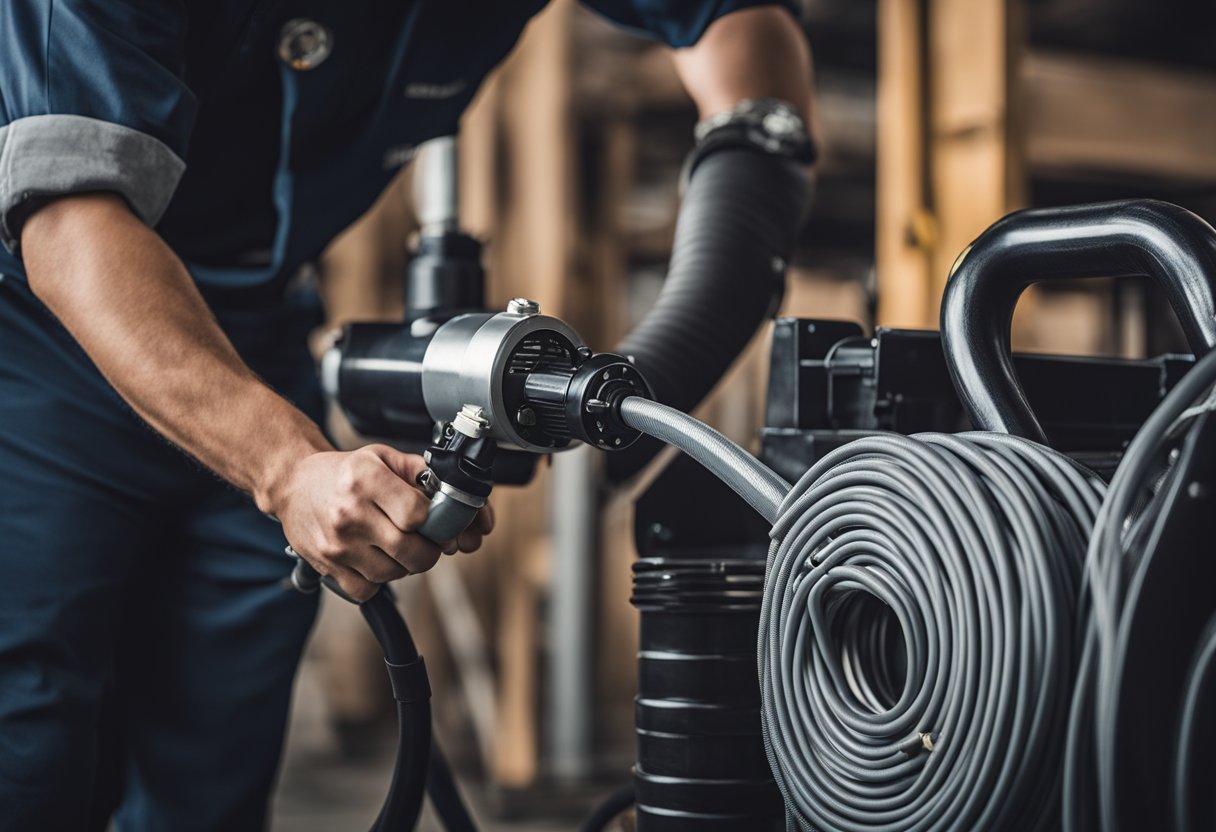
Before we dive into the specifics of using a Porter Cable air compressor, it’s important to understand what an air compressor is and how it works. Simply put, an air compressor is a machine that compresses air and stores it in a tank. The compressed air can then be used to power various tools and equipment, such as nail guns, paint sprayers, and sanders. Porter Cable air compressors are known for their durability and versatility, making them a popular choice among DIY enthusiasts and professionals alike.
Now that you have a basic understanding of what an air compressor is, let’s move on to the specifics of using a Porter Cable air compressor. In the following sections, I will cover everything from safety precautions to setting up your air compressor to troubleshooting common issues. By the end of this article, you will have a comprehensive understanding of how to use your Porter Cable air compressor and take on any DIY project with confidence.
Key Takeaways
- Understanding the basics of air compressors is essential before using a Porter Cable air compressor.
- Proper safety precautions must be taken before and during the use of an air compressor.
- Setting up, operating, and maintaining your Porter Cable air compressor is a straightforward process with the right guidance.
Understanding Porter Cable Air Compressors
As someone who has used air compressors for years, I can confidently say that Porter Cable air compressors are some of the best on the market. They are powerful, versatile, and come in a variety of sizes and types to fit any need.
One of the standout features of Porter Cable air compressors is their capacity. They can hold a lot of air, which means they can power tools for longer periods of time without needing to recharge. This is especially useful if you are working on a big project that requires a lot of air power.
Another important factor to consider when choosing an air compressor is the CFM (cubic feet per minute) rating. This tells you how much air the compressor can deliver at a given time. Porter Cable air compressors typically have a high CFM rating, which means they can power larger tools and equipment with ease.
Porter Cable air compressors are also known for being very versatile. They can be used for a variety of tasks, from powering nail guns and paint sprayers to inflating tires and blowing dust off of surfaces. This makes them a great investment for anyone who needs a reliable source of compressed air.
When it comes to types of air compressors, Porter Cable offers a range of options to choose from. Some of the most popular types include pancake compressors, which are compact and easy to store, and twin-stack compressors, which are more powerful and have a higher capacity.
Overall, if you are in the market for an air compressor, I highly recommend considering a Porter Cable air compressor. With their powerful features, high capacity, and versatility, they are a great investment for anyone who needs a reliable source of compressed air.
Safety Precautions While Using Air Compressors
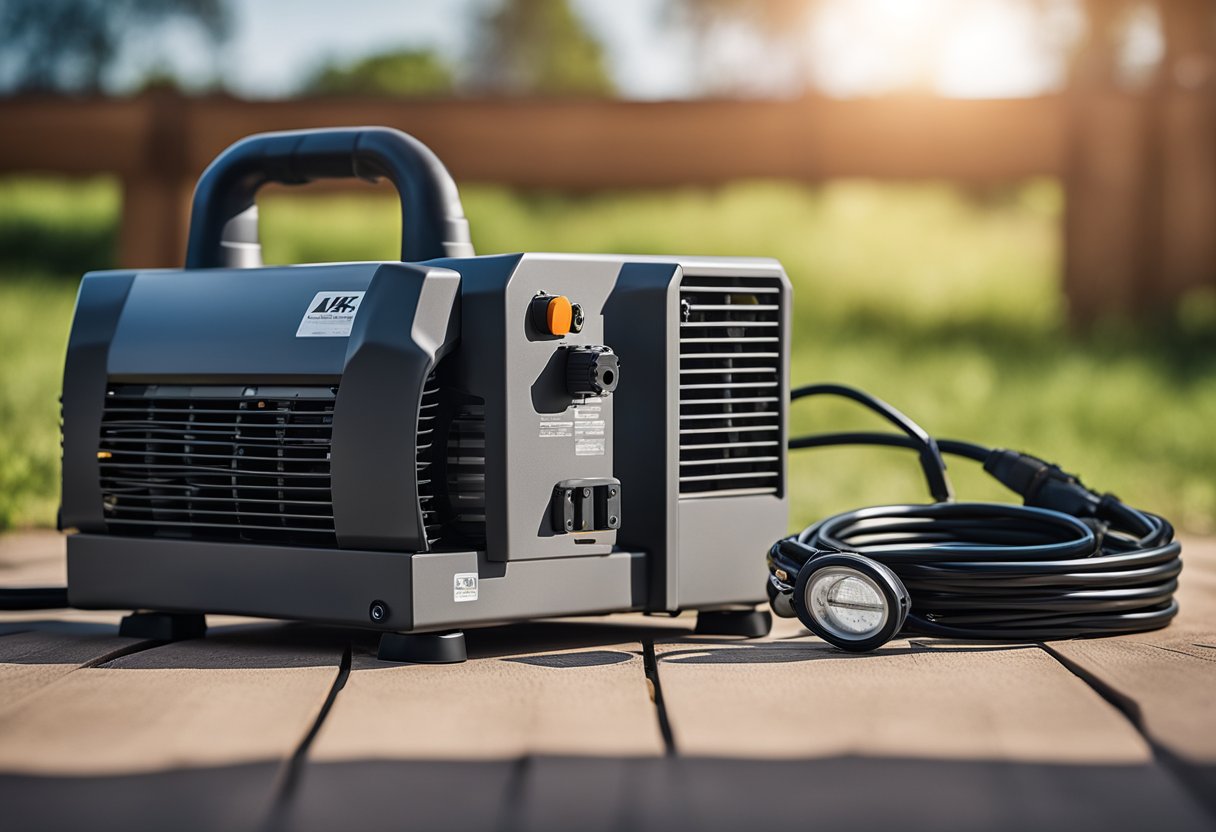
As a professional mechanic, I know the importance of safety when using air compressors. Here are some of the safety precautions that I follow to keep myself and others safe:
-
Read the user manual: Before using a Porter Cable air compressor, it’s crucial to read and understand the instructions provided. The user manual will help you operate the compressor safely and avoid any potential hazards.
-
Wear protective gear: Always wear safety glasses and hearing protection when operating the machine. It’s also essential to wear protective gloves to avoid any injuries while handling the equipment.
-
Work in a well-ventilated area: Always use the air compressor in a well-ventilated area to prevent the accumulation of toxic fumes. Avoid using the compressor in a damp or wet environment.
-
Link the compressor and hose properly: Ensure that the compressor and hose are correctly linked to avoid any accidents or injuries. Check for any leaks or damage before using the compressor.
-
Maintain consistent pressure: Always keep the pressure in check while using the air compressor. Over-inflated objects can be dangerous and can lead to accidents.
-
Avoid rusting the compressor: Keep the air compressor away from moisture and water to prevent rusting. Clean the compressor regularly and store it in a dry place.
By following these safety guidelines, you can ensure a safe and efficient operation of your Porter Cable air compressor. Remember to always be aware of your surroundings and take the necessary precautions to avoid any accidents.
Setting Up Your Porter Cable Air Compressor
Setting up your Porter Cable air compressor is a straightforward process, and you can do it in a few simple steps. Before you start, make sure you have read the manual carefully. The manual contains essential information on how to use your air compressor safely and efficiently.
Here are the steps to follow:
-
Choose the right location: Place your air compressor in a well-ventilated area, away from flammable materials. Make sure the outlet you are using is grounded and can handle the voltage and amperage requirements of your air compressor.
-
Connect the air hose: Attach one end of the air hose to the air compressor’s handle and the other end to the tool you want to use. Make sure the connections are tight and secure.
-
Connect the power cord: Plug the air compressor’s power cord into a grounded outlet. Check the voltage and amperage requirements of your air compressor before plugging it in.
-
Turn on the power: Turn the switch on the air compressor to the “on” position. The air compressor will start building up pressure.
-
Adjust the pressure: Use the regulator knob to adjust the pressure to the level recommended for your tool. Check the tool’s manual for the recommended pressure.
-
Use the air compressor: Once the pressure has reached the desired level, you can start using your air compressor.
Remember to follow all safety guidelines and wear appropriate safety equipment when using your air compressor. With these simple steps, you can set up your Porter Cable air compressor quickly and easily.
Operating the Air Compressor
I have found that operating a Porter Cable air compressor is a straightforward process. Here is a step-by-step guide to help you get started:
-
First, make sure that the compressor is plugged in and turned on. You should be able to hear the motor running.
-
Check the oil level in the compressor pump. The oil level should be between the minimum and maximum marks on the sight glass. If the oil level is low, add oil until it reaches the maximum mark.
-
Attach the air hose to the compressor. Make sure that the hose is securely connected to the compressor and that the other end of the hose is attached to the tool you will be using.
-
Adjust the pressure level using the regulator knob. Turn the knob clockwise to increase the pressure and counterclockwise to decrease the pressure. You can check the pressure level using the pressure gauge.
-
Turn on the compressor by flipping the on/off switch. The compressor will start building up pressure in the tank. You can monitor the pressure level using the pressure gauge.
-
Once the pressure reaches the desired level, the pressure switch will automatically turn off the compressor. You can then use the tool connected to the air hose.
-
When you are finished using the tool, turn off the compressor by flipping the on/off switch to the off position. Open the drain valve to release any remaining pressure in the tank.
-
Finally, disconnect the air hose from the tool and the compressor. Store the air hose and the tool in a safe place.
Remember to always follow the safety instructions provided in the owner’s manual. If you have any questions or concerns about operating your Porter Cable air compressor, consult the owner’s manual or contact customer support.
Maintenance and Troubleshooting
Maintaining your Porter Cable air compressor is crucial to ensure its longevity and optimal performance. Regular maintenance will also prevent rust and corrosion, which can damage the tank and motor.
One of the most important things to keep in mind is to always follow the manufacturer’s instructions and cautions. Failure to do so can result in serious injury or damage to the equipment.
To begin with, it is important to regularly check the oil level and change it as needed. This will ensure that the motor is properly lubricated and running smoothly. Always use the type of oil recommended by the manufacturer.
Another important aspect of maintenance is checking and cleaning the air filter. A clogged air filter can decrease the performance of the air compressor and cause it to overheat. It is recommended to clean the air filter after every use and replace it as needed.
The drain valve should also be checked and opened regularly to remove any moisture that has accumulated in the tank. Moisture can cause corrosion and damage the tank, so it is important to drain it regularly.
If you notice any issues with your Porter Cable air compressor, it is important to troubleshoot the problem as soon as possible. Some common issues include air leaks, pressure issues, and motor problems.
If you suspect an air leak, check the connections for any cracks or wear and tear. If the compressor is not building up pressure, it could be due to a leak in the air hose or a faulty pressure switch. In case of motor problems, it is recommended to take the air compressor to a professional for repair.
Regular maintenance and troubleshooting will ensure that your Porter Cable air compressor runs smoothly and efficiently for years to come.
Accessories and Additional Tools
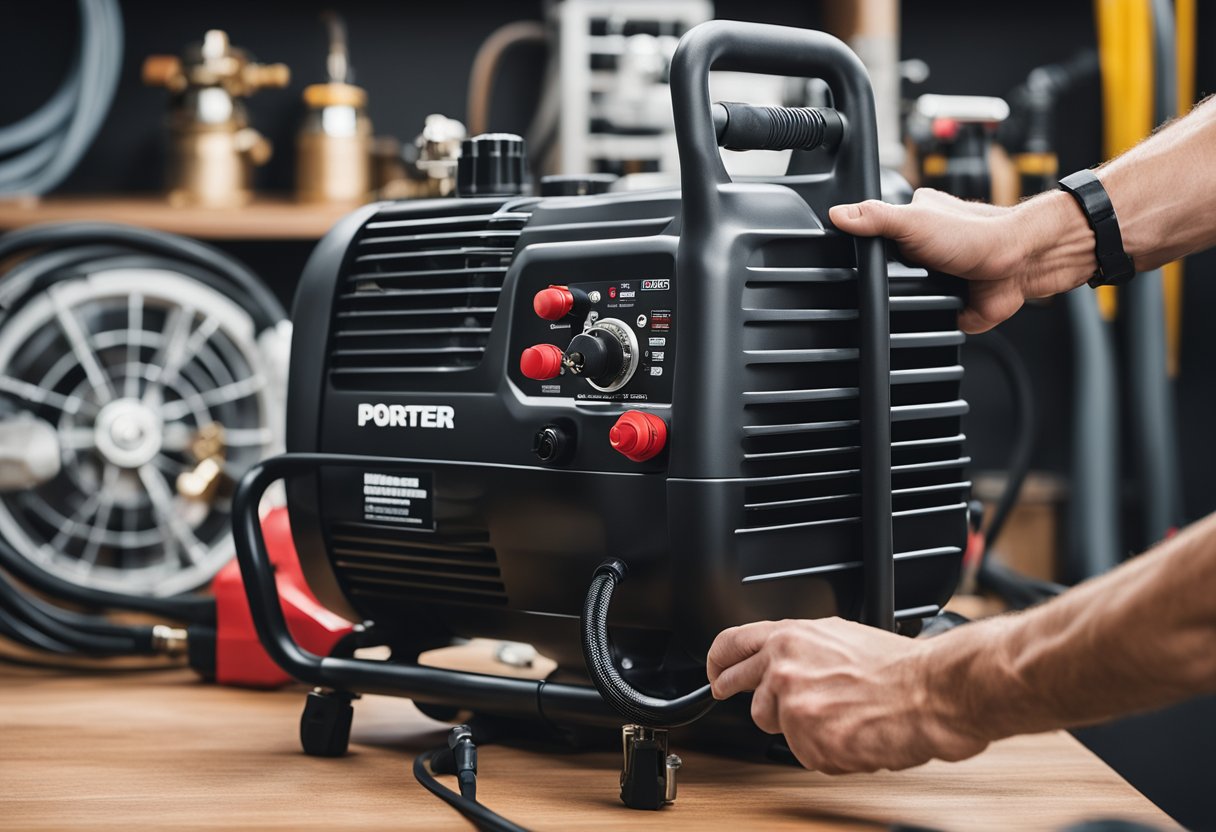
When it comes to using a Porter Cable air compressor, there are a variety of accessories and additional tools that can be used to make the process more efficient and effective. One of the most popular accessories for an air compressor is a nail gun. Nail guns are used for a variety of applications, including framing, roofing, and finishing work. They are a great way to save time and effort when compared to using a hammer and nails.
Another useful accessory for a Porter Cable air compressor is a pneumatic tool. Pneumatic tools are powered by compressed air and can be used for a variety of applications, including sanding, drilling, and painting. They are a great way to save time and effort when compared to using manual tools.
In addition to nail guns and pneumatic tools, there are a variety of other accessories that can be used with a Porter Cable air compressor. For example, a gauge can be used to measure the pressure of the compressed air, while power tools can be used for a variety of tasks, including cutting, drilling, and sanding.
It is important to note that when using an air compressor, it is important to check for leaks and ensure that all parts and valves are working properly. This will help to ensure that the compressor is working efficiently and effectively.
Overall, a Porter Cable air compressor is a versatile tool that can be used for a variety of applications. With the right accessories and additional tools, it can be a powerful and efficient tool for a variety of tasks.
Understanding Different Models of Porter Cable Air Compressors
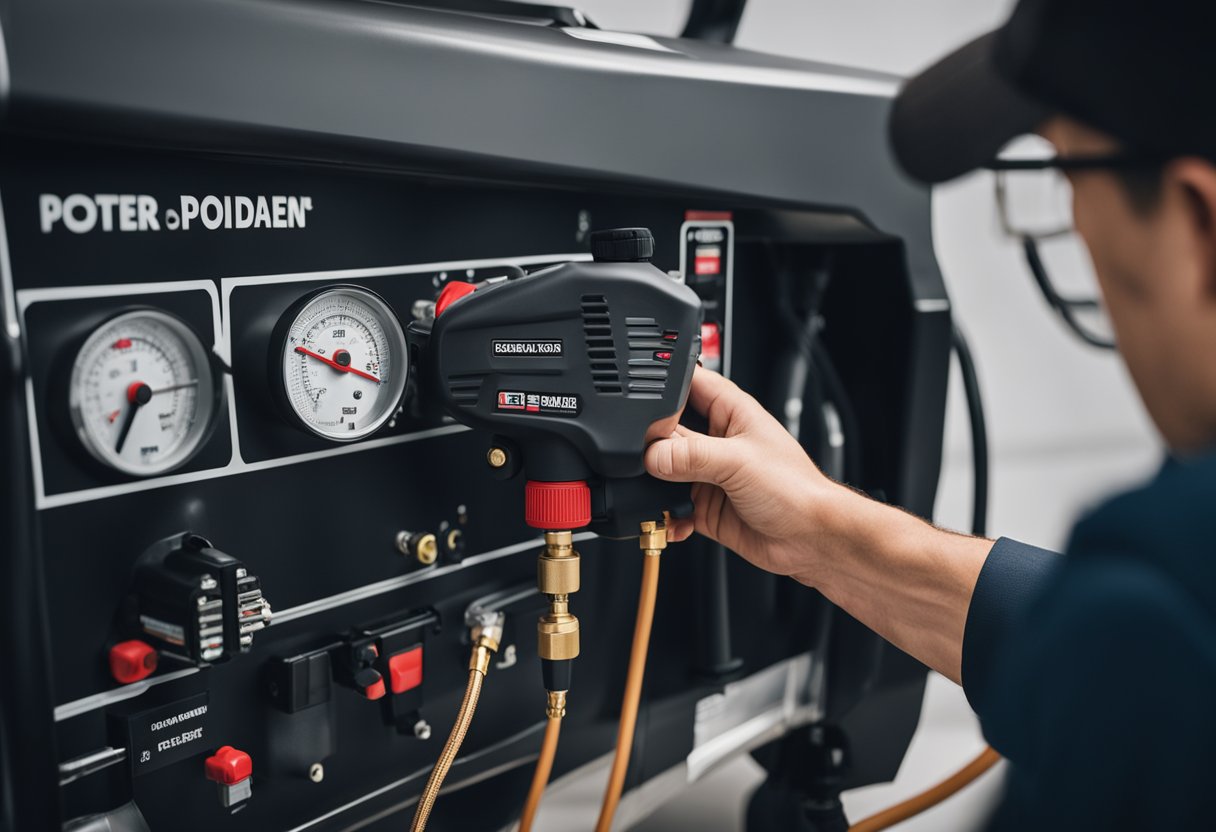
As a professional handyman, I have used different models of Porter Cable air compressors for years. Understanding the different models of Porter Cable air compressors is essential to ensure you select the right one for your job.
Porter Cable offers different models of air compressors that vary in size, portability, and PSI. The most common models are the pancake, hot dog, and twin stack models. The pancake model is lightweight and portable, making it ideal for small jobs such as inflating tires and powering small tools. The hot dog model is larger than the pancake model and has a cylindrical shape. It is also portable and ideal for powering medium-sized tools. The twin stack model is the largest and most powerful model, with two air tanks that provide consistent pressure for heavy-duty tools.
Each model has a different size and PSI rating, so it is essential to choose the right one for your job. The pancake model has a smaller air tank and a lower PSI rating, while the twin stack model has a larger air tank and a higher PSI rating.
Porter Cable air compressors come with a user manual that provides detailed instructions on how to use them. The user manual includes information on how to check the oil level, how to use the power input, and how to regulate the pressure switch on the air compressor. It is essential to read the user manual carefully before using the air compressor to ensure safe and efficient operation.
In conclusion, understanding the different models of Porter Cable air compressors is crucial to ensure you select the right one for your job. The pancake, hot dog, and twin stack models vary in size, portability, and PSI, and each has a different use. Always refer to the user manual for instructions on how to use the air compressor safely and efficiently.
Frequently Asked Questions
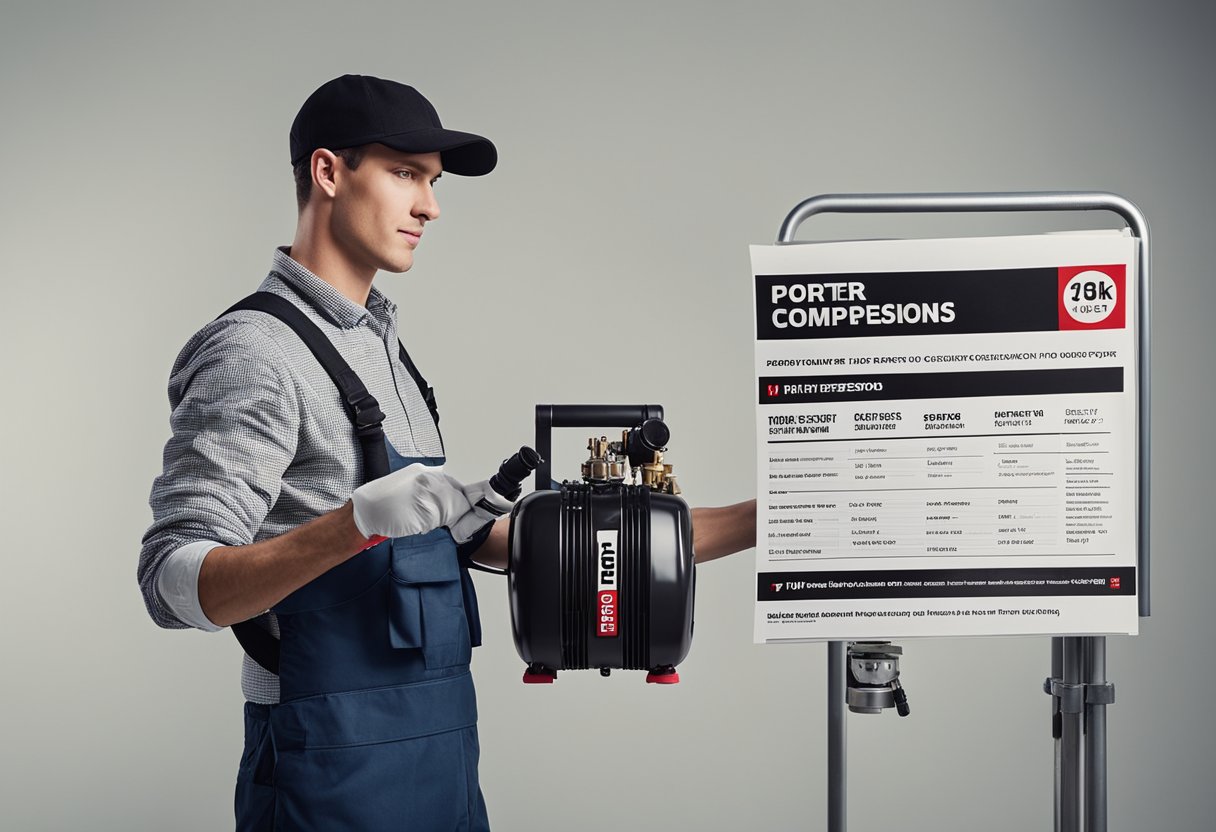
How do I properly attach the hose to my Porter Cable air compressor?
To properly attach the hose to your Porter Cable air compressor, first make sure the compressor is turned off and unplugged. Then, locate the air outlet valve on the compressor and remove the protective cap. Insert the threaded end of the hose into the valve and tighten it securely with a wrench. Make sure the hose is not twisted or kinked, and that it is the appropriate length for your needs.
How do I release pressure from my Porter Cable air compressor?
To release pressure from your Porter Cable air compressor, first turn off and unplug the compressor. Then, locate the pressure release valve on the tank and turn it counterclockwise until you hear a hissing sound. This will slowly release the pressure from the tank. Wait until all the pressure has been released before attempting to disconnect any hoses or fittings.
What are the parts of a Porter Cable air compressor and their functions?
The main parts of a Porter Cable air compressor are the tank, pump, motor, pressure switch, regulator, and gauges. The tank stores compressed air, while the pump pressurizes the air. The motor powers the pump. The pressure switch turns the compressor on and off as needed to maintain the desired pressure level. The regulator controls the pressure of the air coming out of the tank, while the gauges display the pressure levels of the tank and the regulated air.
How do I properly use a Porter Cable nail gun with my air compressor?
To properly use a Porter Cable nail gun with your air compressor, first make sure the compressor is turned off and unplugged. Then, attach the nail gun to the air hose using the appropriate fittings. Adjust the pressure regulator on the compressor to the recommended pressure for your nail gun. Load the nail gun with the appropriate type and size of nails, and then test the nail gun on a scrap piece of material before using it on your project.
What is the recommended pressure for a Porter Cable 6 gallon air compressor?
The recommended pressure for a Porter Cable 6 gallon air compressor is between 90 and 100 PSI (pounds per square inch). This pressure range is suitable for most air tools, including nail guns, staplers, and paint sprayers.
How do I disconnect my nail gun from my Porter Cable air compressor?
To disconnect your nail gun from your Porter Cable air compressor, first turn off and unplug the compressor. Then, release any remaining pressure in the hose by pulling the trigger on the nail gun. Once the pressure has been released, gently twist and pull the nail gun fitting to remove it from the air hose.

Hi, I’m Sal Muller of Tooltrip.com. My DIY experience led me to understand essential power tools for home projects. Tooltrip.com guides enthusiasts and professionals in choosing right tools for any job. I provide concise top tool reviews for easier, efficient DIY.

